Emperor penguins are the largest and heaviest of all penguin species. These flightless birds are known for their striking appearance and remarkable adaptations to life in Antarctica.
In this article, we will explore some fascinating facts about emperor penguins, from their iconic appearance and characteristics to their complex social behaviors.
Remember: Emperors are just one of 18 different types of penguin, see our penguin facts for a broader overview.
1. Emperor Penguins are true Antarctic penguins
Emperor Penguins are found along the entire coastline of Antarctica with the largest populations in the Ross Sea and the Weddell Sea.
They are one of only two species that make Antarctica their permanent home (the other being Adelie Penguins), although other penguins also come to the continent to breed.
All penguins live in the southern hemisphere, although some are found in warmer places than others. The below graphic maps out where each species can be found.
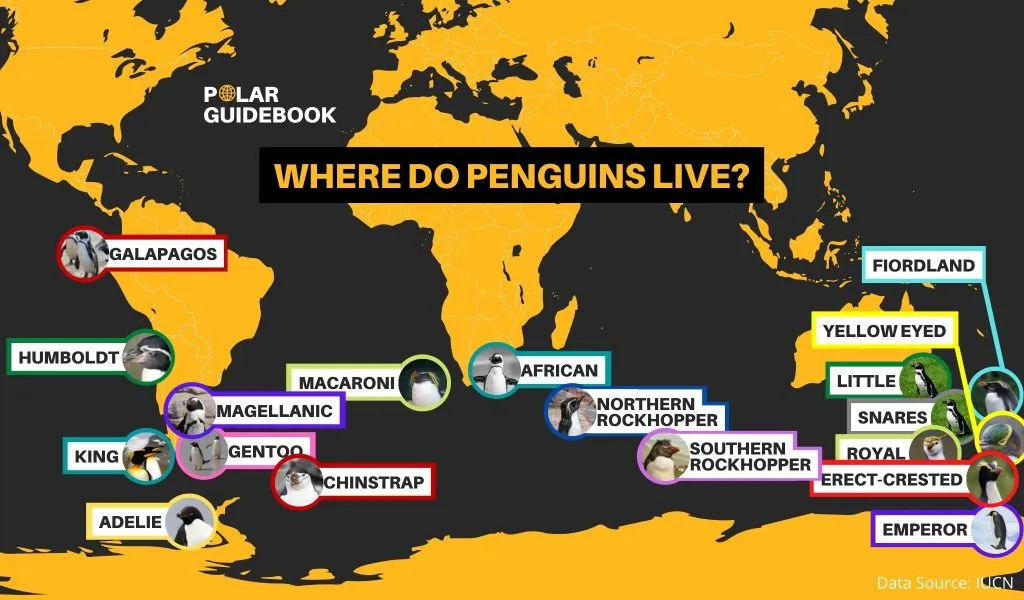
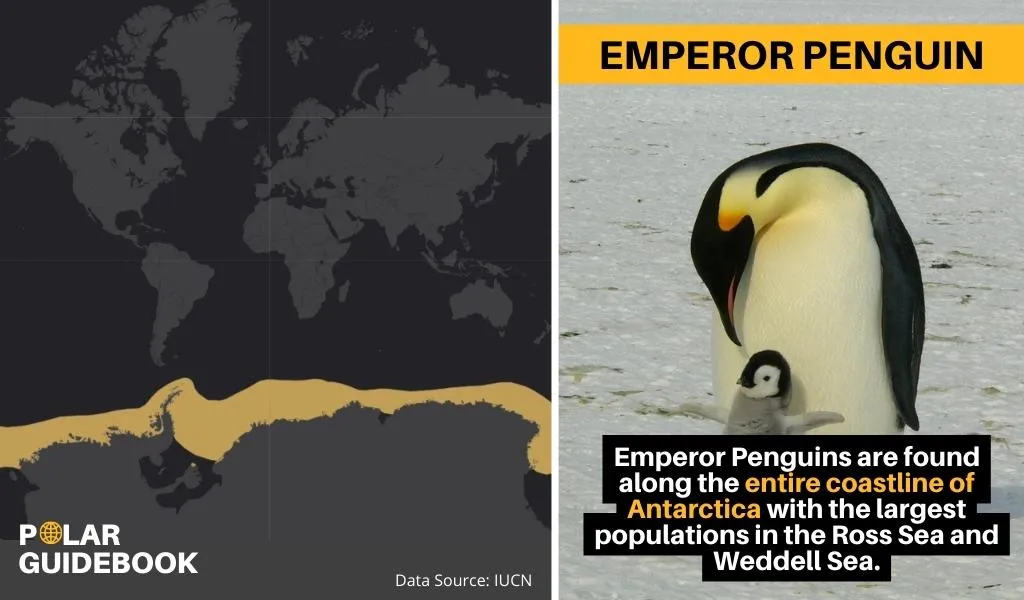
2. They live on seasonal ice
Emperor penguins breed on seasonal sea ice (also known as fast ice) which forms around Antarctica in the winter. They face a reduced habitat in the future due to climate change and its impacts on Antarctic sea ice (source: IUCN).
3. They can dive as deep as 500m in the ocean
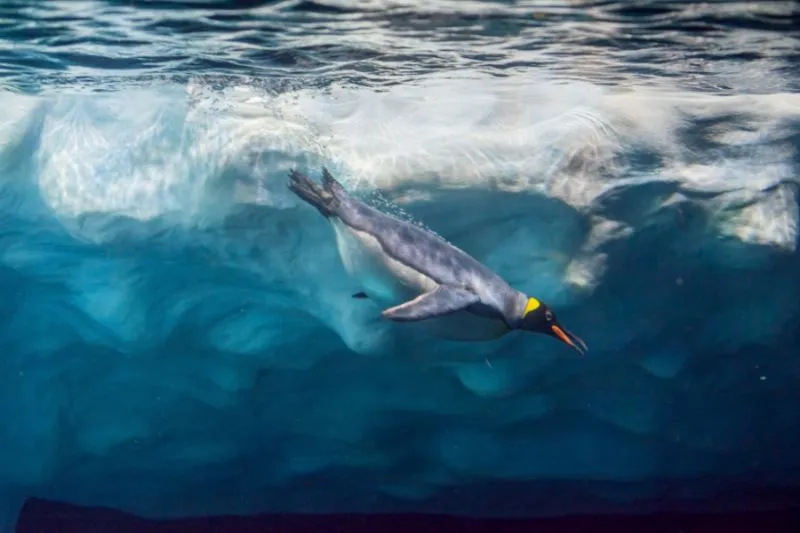
Emperor Penguins can dive to 500m and hold their breath for 23 minutes. They are the deepest divers of all penguins species. By comparison, the record dive for a human with a scuba tank is 332.35 m (1,090 ft 4.5 in)1 (source: Guinness World Records).
Emperor Penguins are especially well adapted to the water. They can stay underwater for long periods because they can slow down their metabolic rate and still function with low levels of oxygen.
4. Emperor penguins eat fish, squid, and crustaceans
Emperor penguins eat a diet of fish (antarctic silverfish), squid (arrow squid), and crustaceans (krill). The most important part of their diet is Antarctic silverfish which makes up to 95% of their diet by mass2 (source: P.D. Boersma and P.G. Borboroglu, Penguins: Natural History and Conservation, 2013).
Penguins catch and eat their food at sea. They will catch prey as they swim upwards and swallow it whole without chewing.
As the largest species, emperor penguins also have the largest appetite. They can easily eat 2-3kg per day3 (source: DELWP, Victoria State Government, Australia). Find out more about what penguins eat.
5. Their black and white color is for camouflage
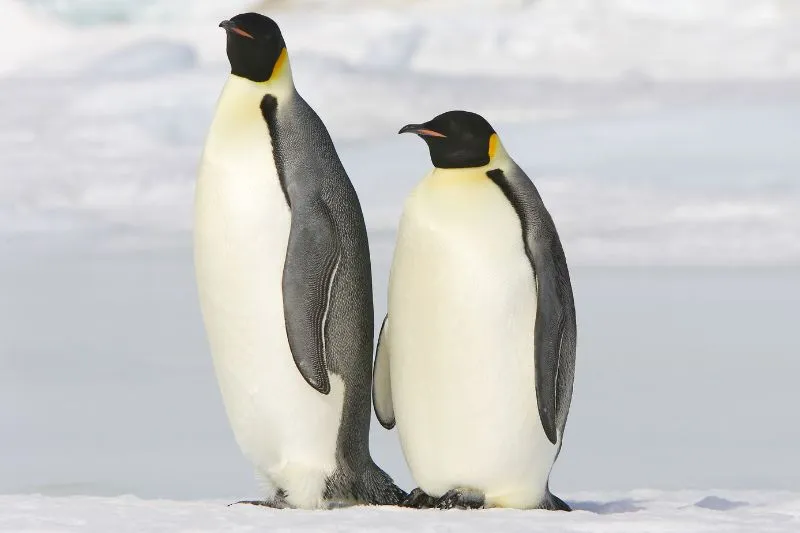
Wondering why Emperor Penguins are black and white? Penguins are white on their ventral (belly) and black on their dorsal (back), this is called countershading and provides better camouflage for them in water.
When seen from below, their white belly blends with the lighter surface waters above, and when seen from above, their black back creates good camouflage against the darkness of deeper waters below4 (source:H.M. Rowland, The Royal Society B Biological Sciences, Issue 364, 2008).
Like most penguin species, emperor penguins have black beaks. However, they also have orange marks on their beaks. Scientists discovered that they also have UV patches that cannot be seen by the human eye. These help them attract a mate5 (source: I. Keddar, Ethology, Vol 121, Issue 11, 2015).
6. They are one of two penguin species to only lay one egg at a time
Emperor Penguins have the largest eggs which is no surprise given that they are the largest penguins. Emperor Penguin eggs are 12 x 8cm (5 x 3 inches) and weigh around 460g (16oz)6 (source: Dynasties: The Rise and Fall of Animal Families, S. Moss, 2018).
The sheer size of the egg means that they are one of just two species of penguin to lay one egg at a time (the other being king penguins). Most other species will lay two or three eggs, although they are much smaller.
Although the Emperor Penguin’s egg is large by bird standards, it only represents 2% of the female’s body weight which makes it one of the smallest bird eggs in the world relative to the bird, beaten only by the Ostrich7 (source: Dynasties: The Rise and Fall of Animal Families, S. Moss, 2018).
7. Emperor Penguins are the biggest species of penguin
With an average height of 115cm (45 inches) to the tip of their beak or 110cm (43 inches) to the top of their head8 (source: The Illustrated Encyclopedia of Birds: The Definitive Reference to Birds of the World, C. M. Perrins) Emperor Penguins are the largest species of penguin still in existence.
They are also the heaviest penguin and can weigh up to 37kg (82lbs)9 (source: Animal: The Definitive Visual Guide).
In the below graphic, you can see how they compare to other penguin species and humans. See our full guide on the size of penguins to find out more.
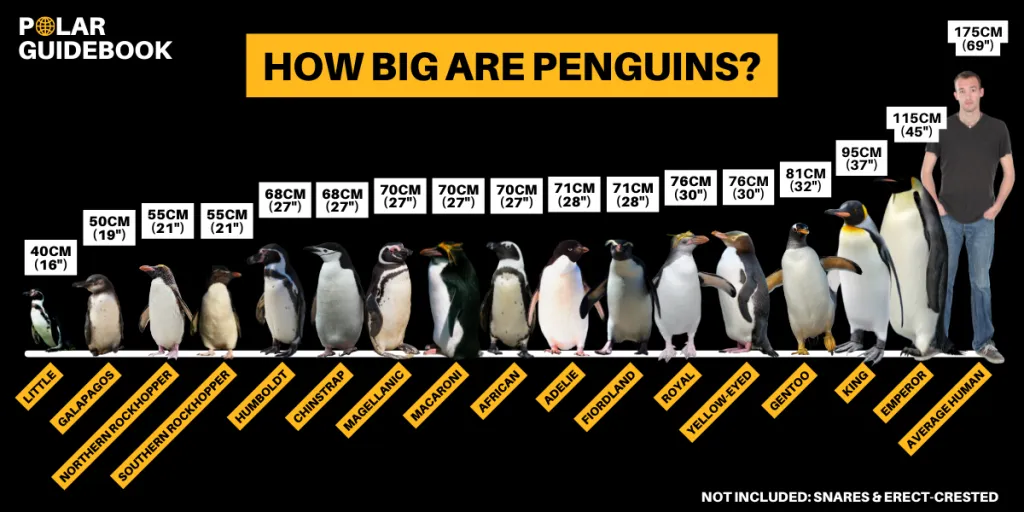
8. It is the male who incubates the egg
Both male and female emperor penguins play a role in raising offspring, right from the get-go. Once the female has laid the egg, she leaves it with the male and spends the next 9 weeks feeding at sea.
The male balances the egg on his feet to keep it off the cold ground and incubate it for anywhere between 53-66 days (depending upon the colony)10 (source: P.D. Boersma and P.G. Borboroglu, Penguins: Natural History and Conservation, 2013).
During this period, the males do not eat anything and go into a hibernation-like state. They huddle together for warmth. Once the chick is born, the male will take his turn feeding at sea.
9. Emperor penguin chicks are left in a creche while the parents are away
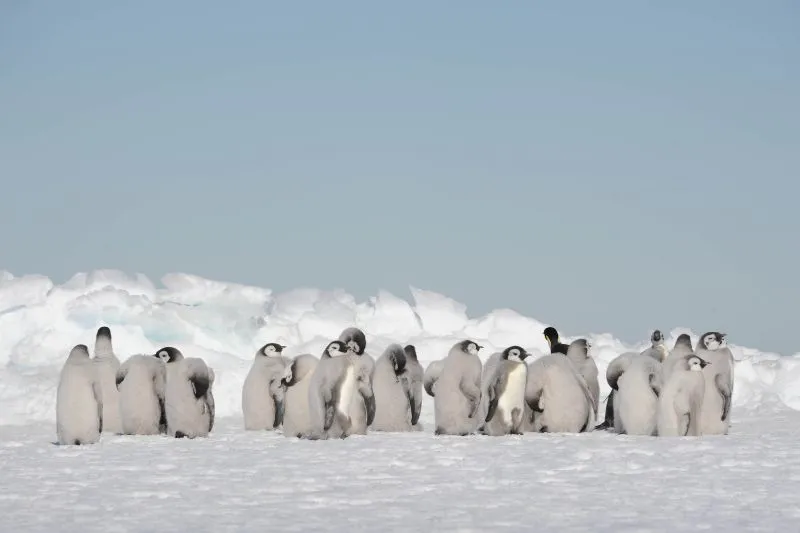
There are some periods when both the mother and father are away feeding at sea and collecting food to bring back for their young. The chicks are unable to join them in the water as they have not yet grown their waterproof adult feathers.
For protection from predators, they will leave the chick in a group with around 100 or so other chicks, this is known as a creche. The creche is sometimes guarded by other adults.
When parents return, they can spot their chick by appearance and from their call11 (source: Britannica).
10. Emperor penguins have a high divorce rate of 85%
Penguins are monogamous which means that they will have only one partner per breeding season with both the male and female playing vital roles in raising offspring.
However, they do not always have the same mate for life. When a penguin chooses a new mate in the next breeding season, it’s called a penguin divorce.
Emperor Penguins have a divorce rate of around 85% which is higher than most other penguin species. Although they only have one partner per breeding cycle, they will have many partners over their lifetime12 (sources: Journal of Avian Biology and Penguins: Natural History and Conservation).
11. Up to 5,000 emperor penguins can huddle together for warmth
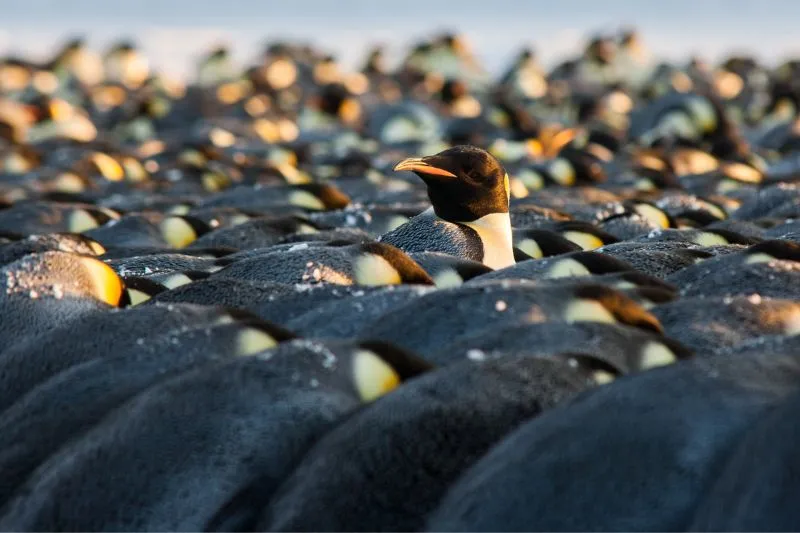
Among Emperor Penguins, it’s the male who incubates the egg. To keep themselves and their eggs warm in the cold Antarctic winter, the penguins form a large huddle which can be as large as 5,000 birds.
In the huddle, the penguins can be crammed in at 10-12 penguins per square meter, this helps maintain a temperature as warm as 30°C in the center13 (source: S. Moss, Dynasties, 2018), compared to -40°C outside the huddle.
The cold penguins on the outer edge will push their way towards the center where the warmer penguins will move out to allow them in, working together to retain heat and reduce the amount of energy they consume whilst incubating the eggs as they cannot eat during this period. See our dedicated article to find out more about how penguins stay warm.
Penguin colonies are so big, that they can easily be seen from space and scientists take advantage of this to track their numbers14 (source: European Space Agency).
12. The lifespan of an emperor penguin is typically 20-25 years in the wild
In the wild, the lifespan of an emperor penguin is between 20-25 years which is just above average lifespan for a penguin, most species live to around 20.
In captivity, penguins live a little longer, typically around 30 years although there have been documented cases of penguins living to the ripe old age of 40 in captivity.
13. There are around 500,000 emperor penguins left in the wild
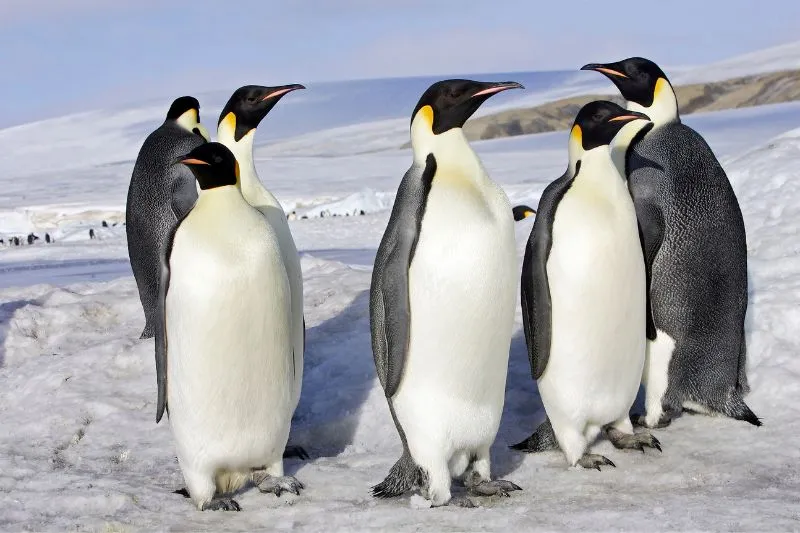
There are currently 238,340 breeding pairs (or 476,680 individuals) of emperor penguins left in the wild15 ( Oceanites State of Antarctic Penguins). This represents less than 2% of the total penguin population which is around 30-31 million across all species.
14. Melting sea ice poses a risk to emperor penguins
Emperor penguins are classified as near-threatened by the IUCN, this is one level down from least concern (the safest level) but means that they may be vulnerable to endangerment in the near future.
The biggest threat facing Emperor Penguins is melting sea ice in Antarctica due to climate change. They use the sea ice as ground for breeding, but as this melts, it will be difficult for them to find stable and long-lasting ice to hatch eggs and rear their young.
This could result in almost 50% of colonies (those north of 70°S) decreasing or even disappearing when global temperatures hit 2°C (2025-2052)16 (source: D. Ainley, et al., Ecological Monographs, Vol 80, No 1, 2010).
See our dedicated article to find out which species of penguins are endangered and why.
15. They take more than 100 naps per day instead of one long sleep
Humans are monophasic which means that we have one main sleep each day to rest our bodies. However, penguins are polyphasic sleepers, so they split their rest into lots of smaller periods of sleep throughout the day and night.
Essentially, they take lots of naps. This is a much safer approach when predators could approach.
A study of Emperor Penguins in their natural habitat found that they spend 10.7 hours sleeping during a 24-hour day with the average length of each sleep period being around 4 – 7.5 minutes17 (source: S.S. Campbell and I Tobler, Neuroscience & Biobehavioral Reviews, Vol 8, Issue 3, 1984). This equates to more than 100 naps each day!
16. They are hunted by birds, leopard seals, and killer whales
There are no land mammals in Antarctica where emperor penguins live so they are relatively safe from predators whilst on land.
The only predators whilst on land are giant petrels and south polar skuas. These are not usually around during breeding season so chicks are pretty safe, but when they return, they may prey on chicks that get separated from the colony18 (source: P.D. Boersma and P.G. Borboroglu, Penguins: Natural History and Conservation, 2013).
Whilst in the water (where they spend most of their time), the main predators are leopard seals and orcas (also known as killer whales).
17. They slide around on their bellies
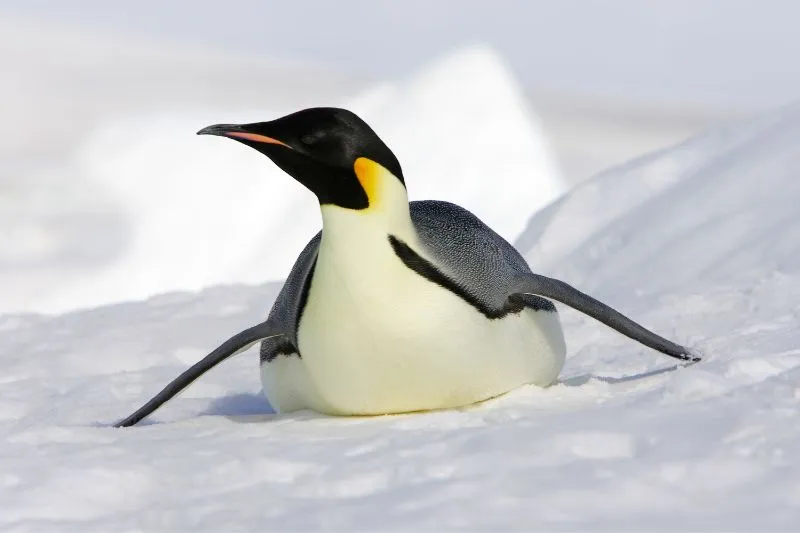
When on land, they can either waddle around on their feet or they can slide on their bellies which is known as tobogganing. When doing this, they will use their feet to help propel themselves forward and their flippers for balance.
The benefit of tobogganing is that it’s usually faster than walking and uses up less energy. However, the snow conditions must be right. You can watch a video of them tobogganing here.
17. They can swim at speeds of up to 4.5mph
Emperor Penguins swim at approximately 7.2 km/h (4.5mph), although during their ascent to the surface where they regulate their buoyancy alongside flippers to propel them upwards, they can reach speeds of approximately 10.4 km/h (6.5mph)19 (source: Katsufumi Sato, Journal of Experimental Biology, Vol. 205, Issue 9, 2002).


![You are currently viewing 17 Ice-Cool Emperor Penguin Facts [#13 Will Melt Your Heart]](https://polarguidebook.com/wp-content/uploads/2023/01/Emperor-Penguins-Featured-Image.jpg)
![Read more about the article How Do Penguins Swim and Dive So Well? [and Other Questions]](https://polarguidebook.com/wp-content/uploads/2022/01/How-do-penguins-swim-so-well-300x176.jpg)
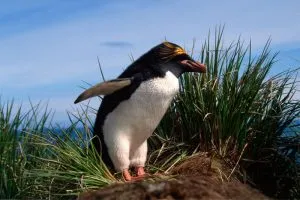
![Read more about the article Why Are Penguins Black and White? [Full Color Palette Explained]](https://polarguidebook.com/wp-content/uploads/2022/01/What-color-are-penguins-300x176.jpg)